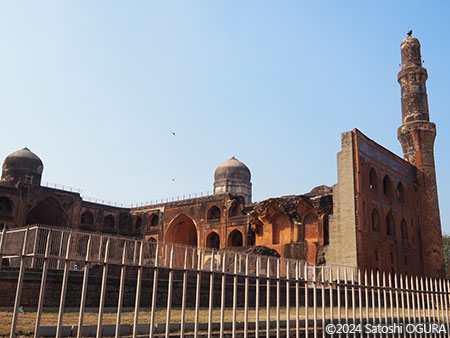Photos taken by ILCAA staff and associates are posted here once a month; most of them are taken during their field research in Asia and Africa.
(The copyright belongs to the photographers.)
Maḥmūd Gāwān’s Madrasa

Maḥmūd Gāwān was born in 1411 in Gīlān province of northern Iran. In his prime, Maḥmūd traveled through Asia and achieved success as a merchant of horses. In 1453, at the age of 42, Maḥmūd landed at a port on the west coast of the Indian subcontinent to sell horses to the Bahmani sultanate in the Deccan. The then-Bahmani sultan Aḥmad Shāh II (r. 1451–58) welcomed him favorably and appointed him a noble. Maḥmūd displayed his outstanding political skill at the court and finally rose to the position of chief minister in 1463. He wrote a number of letters addressed to many rulers and influential persons at the period including Mehmed II of the Ottoman Empire, Abū Sa‘īd Mīrzā of the Timurid dynasty, and sultan Qāitbāy of the Mamluk dynasty. A collection of his letters, Riyāż al-Inshā, was widely circulated in the Persianate world as a model for Persian correspondence. He often tried to invite famous Persianate intellectuals of the Timurids such as ‘Abd al-Raḥmān Jāmī and Sharaf al-Dīn ‘Alī Yazdī to Bidar, but these plans were ultimately not realized. Maḥmūd was executed after being caught up in a political dispute at the court in 1481.
January 31st, 2024
Bidar, Karnataka, India
Photograph by Satoshi OGURA
Copyright © 2010 Research Institute for Languages and Cultures of Asia and Africa. All Rights Reserved.
